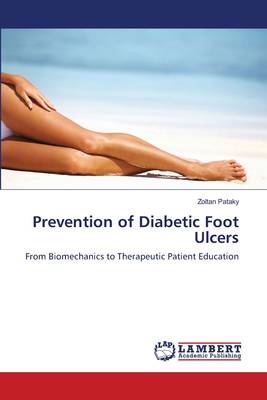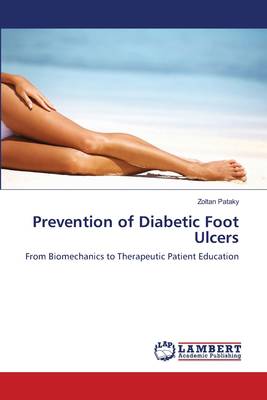
Door een staking bij bpost kan je online bestelling op dit moment iets langer onderweg zijn dan voorzien. Dringend iets nodig? Onze winkels ontvangen jou met open armen!
- Afhalen na 1 uur in een winkel met voorraad
- Gratis thuislevering in België vanaf € 30
- Ruim aanbod met 7 miljoen producten
Door een staking bij bpost kan je online bestelling op dit moment iets langer onderweg zijn dan voorzien. Dringend iets nodig? Onze winkels ontvangen jou met open armen!
- Afhalen na 1 uur in een winkel met voorraad
- Gratis thuislevering in België vanaf € 30
- Ruim aanbod met 7 miljoen producten
Zoeken
Prevention of Diabetic Foot Ulcers
From Biomechanics to Therapeutic Patient Education
Zoltan Pataky
Paperback | Engels
€ 58,45
+ 116 punten
Omschrijving
Diabetic foot disease is one of the most invalidating long-term complications of diabetes. Given the dramatically increasing prevalence of types 1 and 2 diabetes mellitus worldwide, the medical community must be prepared for the number of diabetic foot ulcers and lower extremity amputations that will follow this "epidemic" of diabetes. In recent years, the standards of diabetic foot care have improved considerably. However, despite the availability of new treatments, techniques, and advances in the medical and surgical care of people with diabetic foot disease, the incidence of lower extremity amputation in this population is still extremely high. A widening gap exists between our knowledge in the field and the daily experience and outcomes of patients in diabetic foot care centers. The good news is that it is possible to reduce amputation rates by up to 85%. The remaining question is "How do we do it?" This work summarizes the considerable effort made in the field of diabetic foot disease. Special emphasis is given to approaches dealing with the issue of the loss of protective pain sensations and its consequences, in terms of the development of at-risk zones under the foot.
Specificaties
Betrokkenen
- Auteur(s):
- Uitgeverij:
Inhoud
- Aantal bladzijden:
- 148
- Taal:
- Engels
Eigenschappen
- Productcode (EAN):
- 9783659350733
- Verschijningsdatum:
- 26/02/2013
- Uitvoering:
- Paperback
- Formaat:
- Trade paperback (VS)
- Afmetingen:
- 152 mm x 229 mm
- Gewicht:
- 226 g

Alleen bij Standaard Boekhandel
+ 116 punten op je klantenkaart van Standaard Boekhandel
Beoordelingen
We publiceren alleen reviews die voldoen aan de voorwaarden voor reviews. Bekijk onze voorwaarden voor reviews.











